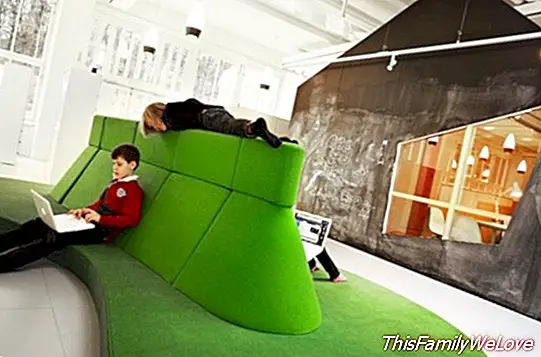Innovative schools: these are the classrooms of the future
Would a better school without walls? Would they concentrate and work better if they did not have to sit at a desk all day? Is it necessary to rethink educational spaces? What is the secret of the most innovative schools in the world? These are some of the questions that Rosan Bosch, architect, designer and one of the most visible faces of innovation in education, has responded in the II International Congress of Educational Innovation held in Aragon.
The passion to change the spaces within the school began for this Dutchwoman when noticing the demotivation with which her children arrived from school. This led him to discover that the formula of sitting children in rows of desks did not favor creativity or learning, but boredom.
So he did an experiment in a school in Copenhagen where he allowed the children to sit on the floor, post their ideas under the tables and work by the light of a lamp ... and it worked! At the end of the school day, the children did not want to leave the class.
Design of new spaces for the school
This is how his drive to change educational spaces and use his talent and education in design techniques was born to lay the foundations for a new prototype of schools without walls, with spaces designed for solo reflection, for group work, to learn lying down or to concentrate fully inside a velvet cave.
Rosan Bosch believes that "we can create a better world starting with the school". In his presentation of the II International Congress of Educational Innovation stated: "We put our children in a physical environment that turns off learning We know that a uniform environment, an environment that does not allow individuality, diversity ... demotivates and makes you leave school to the boys in Secondary School, it's hard to change, but you have to try. "
The best known work of Rosan Bosch is the Vittra school in Stockholm. Completed in 2011, it still surprises those who see it for the first time, although 7 years have passed. The compartmentalized classes were transformed into an open space where there are no partitions, but there are many spaces enabled to develop different functions that teachers need for teaching and students for learning.
The avant-garde furniture of the school of the future

This visual division of space is achieved through the pieces of furniture that are abstract, and of different sizes, since they include both giant structures that house, for example, a grandstand where students can sit to listen to the explanation of a teacher, as comfortable chairs and seats for children to adopt the best posture to learn, away from traditional chairs and desks.
The furniture designed by Rosan Bosch aims to develop interpersonal interactions because it encourages students to move, change positions and sit on the floor as ways to support their learning process.
The architect Rosan Bosch prefers to speak of learning landscapes, a term for which as she herself recognizes "does not have copyright, but that I have distributed in six spaces that are essential to encourage the creativity of children in school and that everything the world that wishes it can put them into practice. " And the Dutch Rosan Bosch conceives "design as a tool for change, to influence, since the physical environment has a great impact on people. The environment is the third teacher, after the student and his teacher. "
Throughout her presentation Rosan Bosch has made a call to enhance the innate creativity of children, because as she says "we are all creative and we have to learn to learn, because each of us has a way of learning." With this conviction , this designer advocates transforming anything that may be compulsory, boring or that produces fear in children. "In his opinion," we must foster the innate curiosity of children, without worrying too much about failure, because failure is also in itself the learning engine ".
Marisol Nuevo Espín




